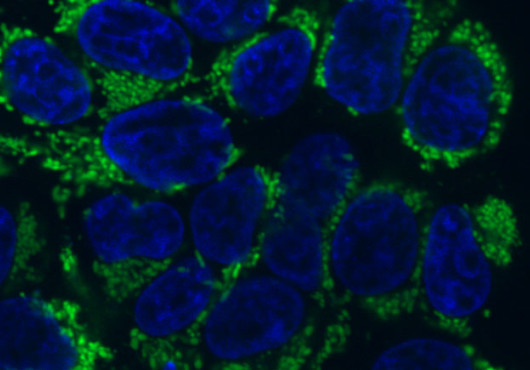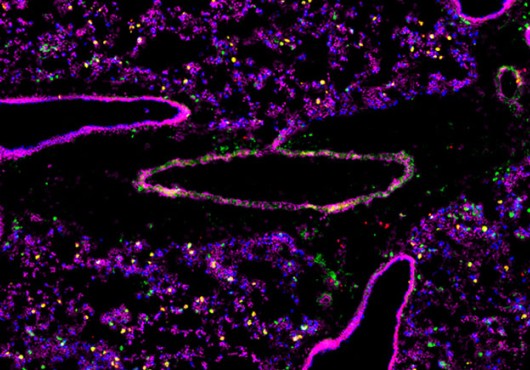
At a glance:
- Multicenter study strengthens evidence that a simple skin biopsy can detect the abnormal protein that is a hallmark of Parkinson’s disease and related neurodegenerative conditions.
- Study is the largest yet to validate the test as a reliable tool for early and accurate diagnosis of conditions often missed or mistaken for one another.
- Findings could accelerate drug development by ensuring clinical trials enroll the correct patients.
A simple skin biopsy can reliably detect the abnormal protein that serves as the pathological hallmark of Parkinson’s and related diseases, according to a team led by Harvard Medical School researchers at Beth Israel Deaconess Medical Center.
The study, published March 20 in JAMA, offers the most definitive evidence to date that minimally invasive skin tests can help physicians diagnose these diseases earlier and distinguish among them more accurately.
There are currently no therapies that address the roots of these diseases. The new findings could speed development of such therapies by ensuring that clinical trials enroll patients with the correct disease, not a different, misdiagnosed one. The work also could help ensure that patients undergoing treatment for symptoms at doctor’s offices receive care for the right disease.
When a patient appears to have tremors or progressing disability, a physician may suspect Parkinson’s or one of several related neurodegenerative diseases. Together, these conditions are known as synucleinopathies because they involve an abnormal form of the protein alpha-synuclein.
Different synucleinopathies have different prognoses and respond to different treatments, yet their overlapping clinical features and lack of definitive biomarkers complicate physicians’ ability to diagnose them early and differentiate one from another.
“Each year, there are nearly 200,000 people in the U.S. who face a diagnosis of Parkinson’s disease and related disorders,” said lead author Christopher Gibbons, HMS professor of neurology at Beth Israel Deaconess. “Too often patients experience delays in diagnosis or are misdiagnosed due to the complexity of these diseases.”
Researchers have known for years that all synucleinopathies involve deposits of phosphorylated alpha-synuclein, or P-SYN, in nerve fibers in the skin.
Skin biopsies have potential to improve early detection because P-SYN is present in the skin even at the earliest stages of disease, before symptoms appear, noted co-author Roy Freeman, HMS professor of neurology and director of the Center for Autonomic and Peripheral Nerve Disorders at Beth Israel Deaconess.
In 2023, the same team showed that measuring P-SYN through skin biopsies of different parts of the body could differentiate patients with Parkinson’s disease from those with multiple system atrophy, another synucleinopathy that has a high misdiagnosis rate, with greater than 90 percent sensitivity and specificity.
The new study is the largest yet to show that skin biopsies can detect P-SYN with high sensitivity and specificity.
Spotting an abnormal protein
In the investigation, titled the Synuclein-One study, Gibbons, Freeman, and colleagues at 30 academic and community-based neurology practices enrolled 428 people aged 40 to 99 who had either a clinical diagnosis of one of the four synucleinopathies — Parkinson’s, multiple system atrophy, dementia with Lewy bodies, and pure autonomic failure — or were healthy control subjects with no history of neurodegenerative disease.
Participants underwent three 3-millimeter skin punch biopsies of the neck, knee, and ankle.
Among the participants with clinically confirmed Parkinson’s disease, 93 percent had a positive skin biopsy for P-SYN.
Participants with dementia with Lewy bodies and multiple system atrophy tested positive at 96 percent and 98 percent, respectively.
One hundred percent of participants with pure autonomic failure were positive for the abnormal protein.
Among the controls, just over 3 percent tested positive for P-SYN — an error rate the authors suspect indicates that some of the healthy controls are at risk for a synucleinopathy.
The authors also found a correlation between the amount of P-SYN detected and the severity of participants’ diseases.
Improving accuracy, accelerating treatments
Freeman and Gibbons, together with Ningshan Wang, HMS instructor in neurology at Beth Israel Deaconess, have been searching for a reliable biomarker for synucleinopathies since 2009.
They developed the research around alpha-synuclein in the skin as part of a licensing collaboration with CND Life Sciences, a neurodiagnostics company.
The new findings could accelerate drug development by ensuring that clinical trials exploring possible treatments for various synucleinopathies include the correct patients and not those with other diseases.
Because of the link between P-SYN amounts and disease severity, the team hopes the skin biopsy test will be useful in evaluating whether trial drugs are working.
The researchers say the test will also improve diagnostic accuracy and treatment of symptoms in clinics.
The study introduced skin biopsies as a new procedure for many movement disorder and cognitive neurology specialists who had not performed them before. The test is already commercially available, and some clinicians are using it, particularly in cases with diagnostic uncertainty or when a patient or clinician is seeking additional support for a diagnosis alongside other tests.
“These are systemic disorders that impact the peripheral and central nervous systems in profound ways,” said Freeman. “This test will allow for the right symptomatic treatments for the right patients.”
Authorship, funding, disclosures
Additional authors on the study include Charles Adler, Pinky Agarwal, Georgiana M. Aldridge, Alexandru Barboi, Bailey Bellaire, Virgilio G.H. Evidente, Douglas Galasko, Michael D. Geschwind, Alejandra Gonzalez-Duarte, Mark Gudesblatt, Ramon Gil, Stuart H. Isaacson, Horacio Kaufmann, Pravin Khemani, Rajeev Kumar, Guillaume Lamotte, Todd Levine, Andy J. Liu, Nikolaus R. McFarland, Mitchell Miglis, Adam Reynolds, Gregory A. Sahagian, Marie-Helene Saint-Hillaire, Julie B. Schwartzbard, Wolfgang Singer, Michael J. Soileau, Jade Stohl, Steven Vernino, and Oleg Yerstein.
The work was supported by the National Institutes of Health (grant R44NS117214) and sponsored by CND Life Sciences.
Levine, Bellaire, and Stohl are employed by CND Life Sciences. Gibbons and Freeman have stock options in CND Life Sciences. No other potential conflicts of interest are noted.
Adapted from a Beth Israel Deaconess Medical Center news release.





